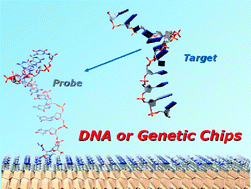Sensors for DNA detection: theoretical investigation of the conformational properties of immobilized single-strand DNA
Abstract
A major challenge in the design and creation of biomolecular sensors is the development of efficient strategies using both existing synthetic technologies and novel fabrication methods to effectively adsorb and assemble different molecular species on suitable substrates. In order to generate stable and effective biodevices it is fundamental to understand the mechanisms responsible for the formation of the supramolecular structures, to evaluate to what extent the function and conformation of the adsorbed

- This article is part of the themed collection: Nucleic acid simulations

 Please wait while we load your content...
Please wait while we load your content...